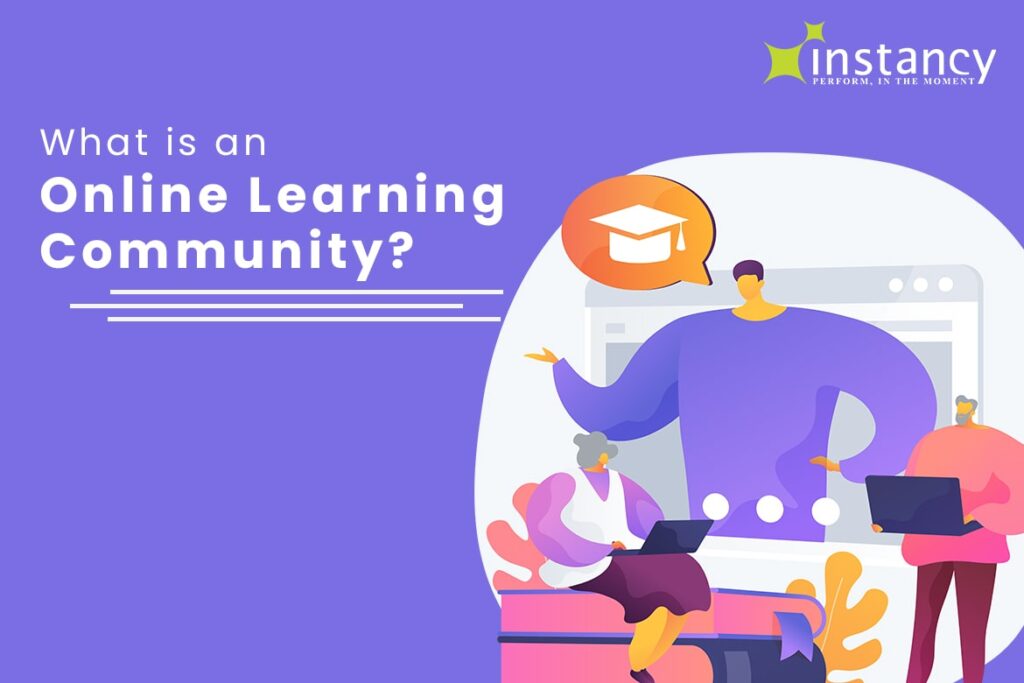eLearning is much more than an online course. This article discusses the concept of a ‘learning community’ that goes far beyond the notion of a course or a learning program. Building a learning community can create an ongoing learning environment.
Broadly speaking, collective work towards common learning goals, by a cohort of students and facilitators in an academic or business settings defines a learning community. For example, individuals trying to learn digital marketing, project management, artificial intelligence, or any other subject. It is a method to foster collaborative learning and leverage participation and insights of the learner towards a structured, engaging, and effective evidence-based approach to designing lessons and delivering instructions.
Learning communities enable improvement in the ability to achieve rapid yet significant progress as the participants work cohesively, sharing results and learning from each other.
A learning community may include many users, playing many roles. For example, Subject Matter Experts, Instructor (who facilitates virtual classrooms), Learners, and Learning Administrators. A learning community is a way to bring together multiple modes of learning along with knowledge sharing among the participants.
The interplay of ideas and experiences of social learning with an attempt to provide eLearning components makes for an engaging and effective learning culture.
The premise that better learning comes through observation, collaboration, and interaction is a time-tested and widely accepted practice. What shall be discussed from here on, is the bringing together of eLearning and social learning concepts.
eLearning includes web-based consumption of content in a structured format. The interactions in eLearning may include video, text, graphics, animation, and a variety of multimedia elements. Interactive question and answer sessions may also form an important instructional tool in eLearning.
Microlearning is the more engaging offshoot of eLearning and is based on the key characteristic of brevity. This could either be short-term learning activities or small learning units. This bite-sized training has gained momentum in the current context of busy schedules and short attention spans. A few microlearning samples are skills training, compliance training, and employee onboarding. Some examples of microlearning content are:
- Text (phrases and short paragraphs)
- Images (photos and illustrations)
- Videos (short ones)
- Audio (short snippets of speech and music)
- Tests and quizzes
- Games (simple screen challenges)
The benefits of microlearning are primarily affordability and flexibility. Microlearning is faster to deliver, is more engaging, and it boosts retention. The disadvantages cannot be overlooked though. Microlearning is not ideal for complex concepts or for subjects that require in-depth training.
The one other impactful and important aspect of eLearning is virtual class homes or virtual classrooms. Content is shared via screen space and interaction between the instructor and the student is possible, information can be viewed, and interaction is facilitated by way of video and audio conferencing and chat tools that enable posting of questions and comments.
Let us now shift our attention to the concept of social learning. The concept of social learning draws from the strengths of the concepts found in social media. Social media facilitates the shared consumption of thoughts, ideas, and information by building virtual networks and communities. This digitally mediated technology allows users to create and quickly share content with an audience, making it a multimedia-rich sharing tool.
Let us review the concept of a discussion forum that invites comments and questions on topics from both the users and the instructors. This discussion forum can have multiple topics with comments and replies from all the participants. This discussion forum can be a part of a course or can be on the website inviting student or user participation.
Another important facet of social learning would be the ability to seek and search. Experts and peers can be reached out to, at any point in time for the exchange of information. Messages and documents received, encourage responses with subjective insights and observations elevating both quality and quantity of content. Social learning is a perennially evolving process as the learner is the recipient of additional information and content thereby adding a new dimension to an otherwise mundane learning experience.
Learning communities as opposed to the traditional classroom-type of environment, creatively combine micro or conventional eLearning courses with a calendar of interactive events that further the impact of the learning process. Innovative introduction of points and badges, rewards, and validation energize, motivate, and contribute to enhanced participation.
Regular updates on new content uploaded creates curiosity and engagement that would not be possible to achieve with a typical stand-alone eLearning course. It includes self-paced learning as well as collaborative learning. Content can be generated by participants and not just by SMEs or Instructors.
Participants bring their insights and experiences to ask questions, share practical experience, upload content – this adds more value than what is typically found in classroom training which is more one-way knowledge dissemination.
An important concept that has brought about a paradigm shift in the way we view business transactions is the evolution of eCommerce. Also referred to as electronic commerce or internet commerce, it broadly covers any kind of commercial transaction on the internet. Products have become easier to find and purchase through online retailers and marketplaces.
Large corporations, small businesses, and independent freelancers have universally accrued the benefits of eCommerce by selling goods and services at a scale that was not possible with traditional offline retail. The learning community can introduce eCommerce tools and amp up their game by inviting paid subscriptions.
The learning community then goes on to become a business tool for experts who share their knowledge and insights and pave the way for furthering their income. The exchange of content created and generated contribute to the community and takes on the form of an entrepreneurial business venture as well.
The amalgamation of one course with a series of microlearning modules furthers the growth of a holistic curriculum or a large library.
An inclusion of lucid learning paths, assessments, surveys, virtual classrooms, and certifications enhances the effectiveness of the learning platform. Incorporating social learning tools such as interactive discussion forums, question and answer knowledge base, engaging games, and inviting user-generated insights and content amplify the strengths of the learning community experience.
Instancy’s all-in-one platform as the name suggests includes everything that furthers the quality of content offered. Instancy authoring tools expedite your eLearning content development and empower the team to create interactive multimedia content.
The keyword in the concept of the learning community is the relational stance in which learning takes place with others and the learning resources. The mindful shift to learning communities is a collaborative enterprise working across boundaries with access to diverse groups, insights, and content enriching the learning experience.
In the future, learning communities will use Artificial Intelligence to aggregate and personalize learning for each learner within the community.





